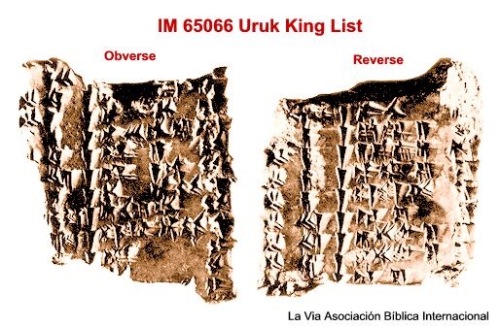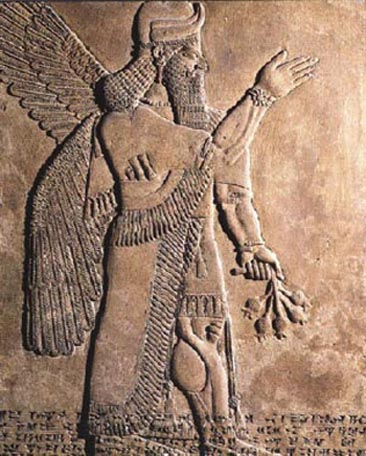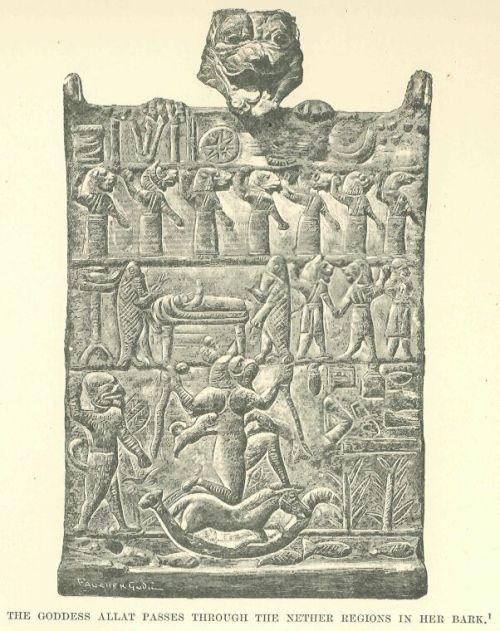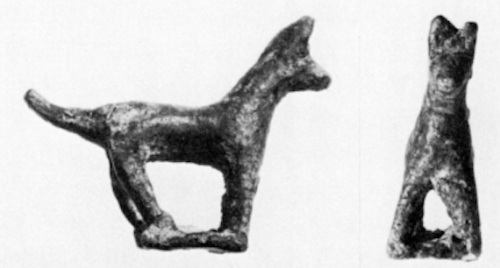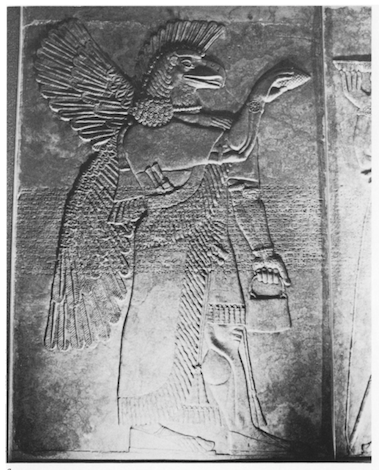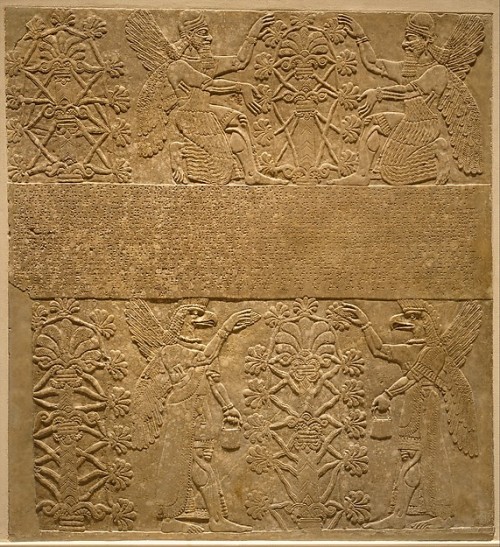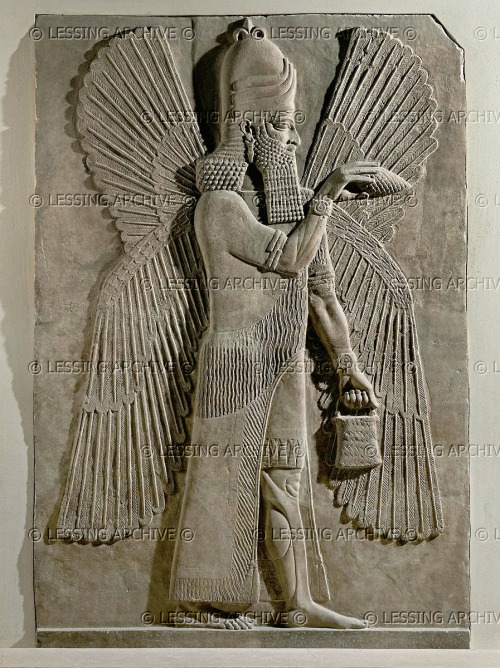Lenzi: The ummânū Were The Scribal Heirs of the Antediluvian Sages
“Finally, although not giving specific proof of a genealogical relationship, the content of the well-known “Catalog of Texts and Authors” edited by Lambert attests once again the close connection between Ea, the mythological apkallū, and the ummânū as in the “mythology of scribal succession.”
In this text Ea is credited with the authorship of several large and important works (see I 1- 4). Following his works, the catalog lists Oannes-Adapa, the first mythological apkallū in the common list of sages of the Uruk list, Bīt mēseri, and Berossus, and credits him with the authorship of the astronomical series Enūma Anu Enlil (5-6).

Fish-Apkallū statuettes of the type that were buried in the foundations of buildings.
The so-called parādu-fish apkallū were the seven antediluvian sages of Sumeria.
It also lists him as the author of another work later in the catalog (VI 15-16). Although the title of this other work is only partially preserved, it is notable that the preserved portion reads ša lām abūbi, “from before the flood.”
Following these first two authors (Ea and Oannes-Adapa), the catalog enumerates many other works and their putative authors. Two of these are known to be apkallū: one, named Enmeduga (IV 11), does not have a preserved title, but is known as the third antediluvian sage in the common list of sages; another is called a sage but his name is not preserved (III 7).

Bird Apkallū and Fish Apkallū, the so-called parādu-fish, side by side. Apkallū statuettes of this design were buried in appropriate places in the home of a Babylonian exorcist. They were believed to have prophylactic qualities, guarding the home from evil.
The majority of the remaining authors are ummânū, usually āšipū or kalû but also including a bārû. Several among those listed in the catalog are also listed in the ULKS:
- Sin-leqi-unnini (VI 10),
- Kabti-ili-Marduk (II 2),
- Sidu (VI 13),
- Gimil-Gula (VI 8),
- Taqiša-Gula (IV 9), and
- Saggil-kina-ubbib (= Esagil-kin-ubba in the ULKS) (V 2).
The last human apkallū in Bīt mēseri, Lu-Nana (VI 11), is also attested.
To find mentioned by name scholars who would be remembered hundreds of years later in the tradition (in the ULKS) is somewhat remarkable. But it is even more remarkable that these scholars, along with a couple of mythological sages and the god Ea, are placed alongside other, presumably less celebrated scholars, many of whom we know absolutely nothing beyond what this text preserves.
This suggests the genealogical relationship to antediluvian sages extended to all scholars as a class.
Taken as a whole, a general picture emerges that sustains the idea that the “mythology of scribal succession,” though never presented as clearly as in the ULKS, was quite alive early in the first millennium.

Human apkallu, known as ummânū, distinguished with two pairs of wings. In a gesture of ritual purification, he holds a “cleaner” cone in one hand, and a bucket in the other. The cone is called a mullilu, the bucket a banduddu. From Nimrud, capital of king Ashurnarzipal.
AO 19845
The ummânū fashioned themselves—consciously or perhaps unconsciously—into the scribal heirs of the antediluvian sages, themselves closely allied with Ea, the patron deity of the ummânū.
This relationship of scholarly succession gave mythological support for the roles of the ummânū at court and in society as ritual experts, counselors to the king, and authors of important cuneiform works. (The scholars may also have inscribed their relationship to the apkallū in the palace reliefs as argued by Mehmet-Ali Ataç, “Scribal-Sacerdotal Agency in the Production of the Neo-Assyrian Palace Reliefs: Toward a Hermeneutics of Iconography” (Ph.D. Dissertation, Harvard University, 2003)).
As this mythology of succession was accepted and reified—that is, after it was accepted as a fact of the ordered cosmos—it would have galvanized the importance of the scholarly texts for the scholars and for the king they served.
Given the precarious professional existence of the scholar (see “The Forlorn Scholar”) (see Simo Parpola, “The Forlorn Scholar,” in Language, Literature, and History: Philological and Historical Studies Presented to Erica Reiner, ed. F. Rochberg-Halton; American Oriental Series 67 (New Haven: American Oriental Society, 1987), 257-78) and their institutional dependency for scholarly support, this development was a major contribution to their social security.”
Alan Lenzi, The Uruk List of Kings and Sages and Late Mesopotamian Scholarship, JANER 8.2, Brill, Leiden, 2008. pp. 151-3.

![AM-102 ; No. #1 (K4023) British Museum of London
Tablet K.4023 COL. I [Starting on Line 38] . . . Root of caper which (is) on a grave, root of thorn (acacia) which (is) on a grave, right horn of an ox, left horn of a kid, seed of tamarisk, seed of laurel, Cannabis, seven drugs for a bandage against the Hand of a Ghost thou shalt bind on his temples. FOOTNOTES: [1] - The American Journal of Semitic Languages and Literatures, Vol. 54, No. 1/4 (Oct., 1937), pp. 12-40; Assyrian Prescriptions for the Head By R. Campbell Thompson
http://antiquecannabisbook.com/chap2B/Assyria/K4023.htm](https://ma91c1an.files.wordpress.com/2015/07/k4023-antdiluvian-medical-text.jpg?w=500)















